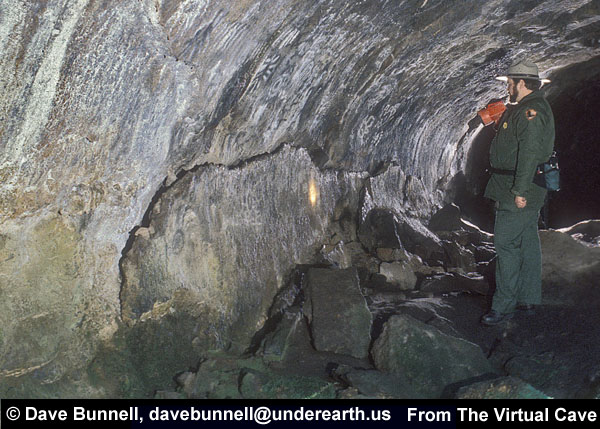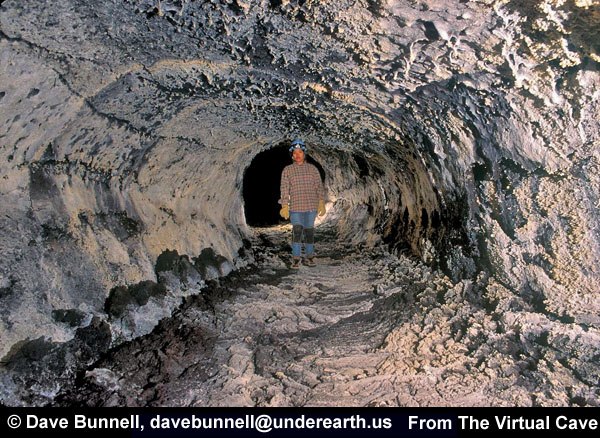

|
As successive flows pass through an established tube, they may accrete material on the walls in thin layers called linings. Sometimes up to a dozen distinct layers can be visible where a large chunk of wall has fallen. Individual layers may also peel off to become thin plates of breakdown, typified by one surface being smooth and perhaps showing a glaze while the former inside surface tends to be rougher and frothier. Top photo: Park service ranger shines his light on a single layer of lining that is separating from the wall. Middle photo: The left-hand wall shows two distinct lines demarcating the top edges of linings accreted to the wall. Note that they tend to be irregular as they typically form from flowing lava, which splashes about, rather than from a lava lake, which would produce a straight line at the top. A third lining near floor level has become partly detached from the wall. Bottom photo: If a subsequent flow completely
fills a passage, the lining formed by the newly accreted material may
adhere to the ceiling as well as the walls and floor. |



| Back to: | |
 |
Created: December 11, 2008 Author: Dave Bunnell |